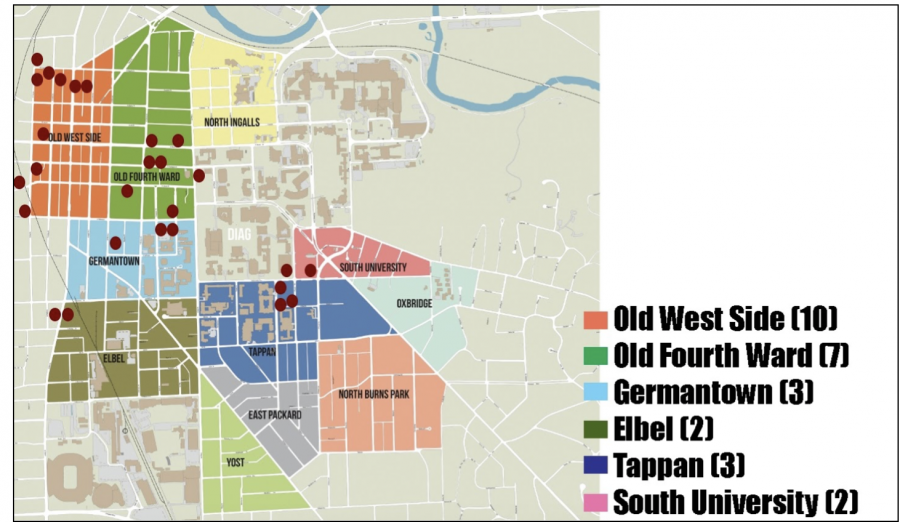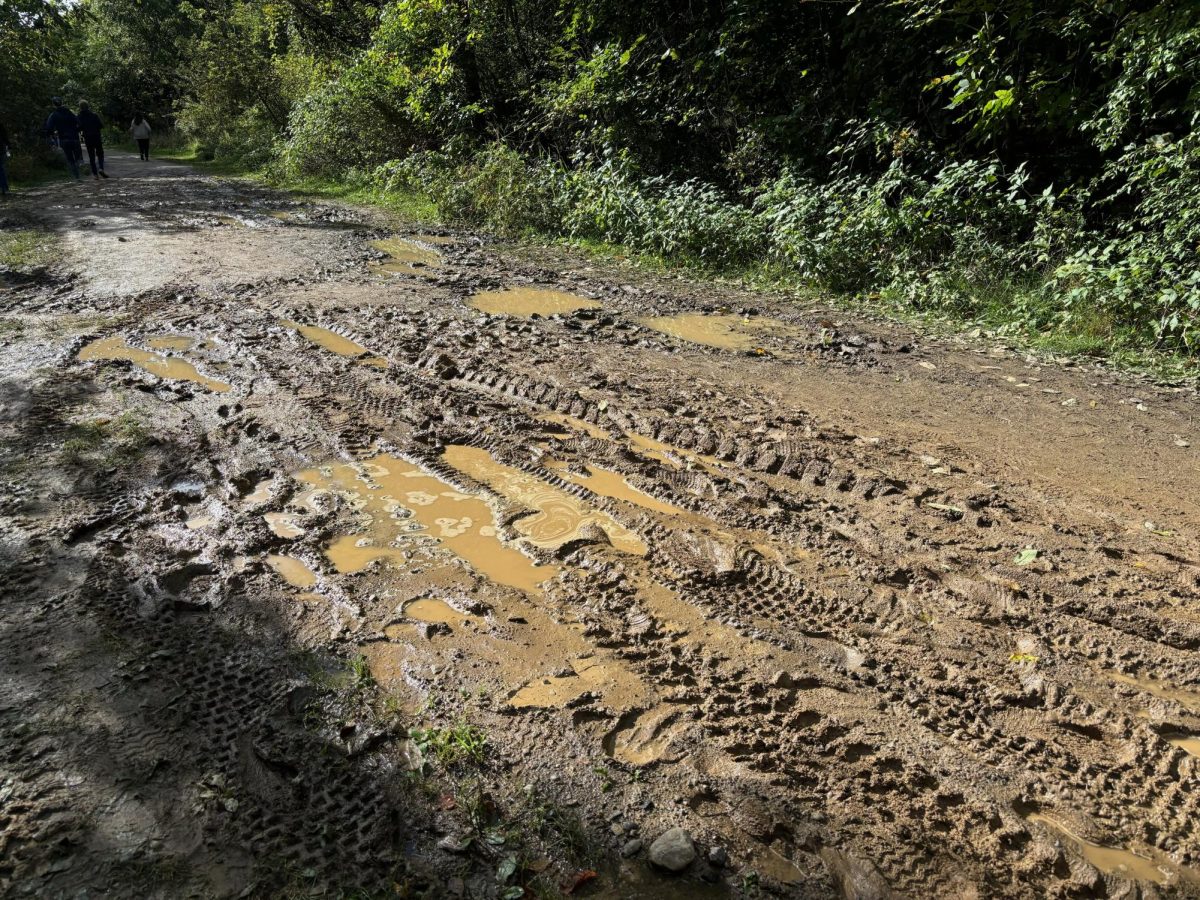Rising rates
Ann Arbor’s downtown area has seen 27 high-rise developments built in recent years. The need for more affordable housing hasn’t received as much attention as the more expensive high-rises that are being built. “Denser population is the way we are going in the future. Less transportation is necessary,” Coetzee said.
May 12, 2020
Ann Arbor’s busy downtown streets have seen several construction projects creating expensive high-rise housing options. This new and gentrified downtown skyline towers over many of the smaller, original buildings from historical Ann Arbor. Despite the high cost, these developments give residents a short commute to jobs downtown.
Three different types of developments are being built downtown: condominiums, apartments and lofts. The majority are condominiums that allow for people to buy in full but do require buyers to pay for maintenance and shared areas. Condos are currently high in market value and the city is investing in several developments.
Andries Coetzee, a current resident in a condominium complex at 410 N First, has been living in a condo unit since February of 2018.
“We had a much bigger house in Water Hill and it was too big for just two people,” Coetzee said. “That was one main reason, downsizing. Being able to walk to campus, and not having to look after the yard, that’s nice.”
Housing developments downtown create a denser population which affects the need for busing or other transportation from far locations. Coetzee used to live about four miles from his office building on the university’s central campus, far for him to walk.
“If we can live in more walkable cities it will be better for the economy, environment and community,” Coetzee said. “Where we lived, we had a beautiful house but we were very disconnected from our neighbors. Now we are a community in this building that looks after each other because we use the same elevator in the same hallway, we can’t miss each other and there is value in living close together.”
The shortage of affordable housing means more and more people who work in Ann Arbor are commuting from outside the city. Affordable housing residents pay less than 30% of their income towards housing and often struggle to pay for necessities. More affordable housing sites are being built in neighboring towns that provide for lower economic diversity in Ann Arbor. The University contributes to higher property prices and makes it less affordable to live.
“I don’t think Ann Arbor has enough affordable housing and condo buildings to contribute to that problem,” Coetzee said. “There were three small homes that were knocked down to build this building. If the city were to use the tax income that they can generate from buildings like this to for instance work on affordable housing, that would be good.”
Denser population near work sites downtown means more high rises. The city gains two to three times more tax income per unit in a condominium complex than a few homes on the same space of land. But buyers end up having to pay more money for less space than a house.
“I feel sorry because when I came to Ann Arbor 16 years ago, these tall student apartments didn’t exist yet,” Coetzee said. “There was a very thriving market of student houses. I think [home renters] are struggling right now because there are now all these tall skyscrapers that went up for students and I think these privately owned homes that people rented out probably are not as fancy –– not as up to date. So I think those businesses are struggling.”
Ann Arbor rent rates are rising dramatically. Zumper.com reports that Ann Arbor has the second-highest rate for rent in a college town with a 15.9% increase year over year.
Residents like Coetzee have noticed the rise in the market. Coetzee’s unit has significantly increased in value since he bought it five years ago when it was still just a blueprint. After construction, other units of roughly the same size as his sold for about 40% more.
The average rent for a single bedroom unit in Ann Arbor is $985. Students are struggling to find cheap housing on the ever-expanding University of Michigan campus. Many University students live on campus in dorm rooms, but some look for cheaper off-campus housing that allows more freedom from collegiate rules such as owning a pet.
Hub on Campus – Ann Arbor, a new complex that completed construction in May of 2018, provides a popular opportunity for student housing and is located only a block from central campus. American Campus Communities (ACC) owns Hub Ann Arbor and is one of the major housing owners and developers of student housing. ACC bought the property from Core Spaces LLC., which owns the majority of Hub on Campus properties and will have 21 buildings around the country by the end of 2020. The current minimum rent for a room and amenities at Hub Ann Arbor is $1049 per person.
In 2015, a report by CZB found that Ann Arbor needs 2,800 affordable housing rental units by 2035 in order to meet demand. That’s 140 new units per year.
Only 50 new affordable units have been built in the last five years.
Ann Arbor has seen many small businesses and homes torn down to build high-cost multi-story housing. As the population grows, housing is needed, and the convenience of travel to work is important to residents. The city receives more from taxing each individual unit although it does provide hardship for people looking for affordable housing.











